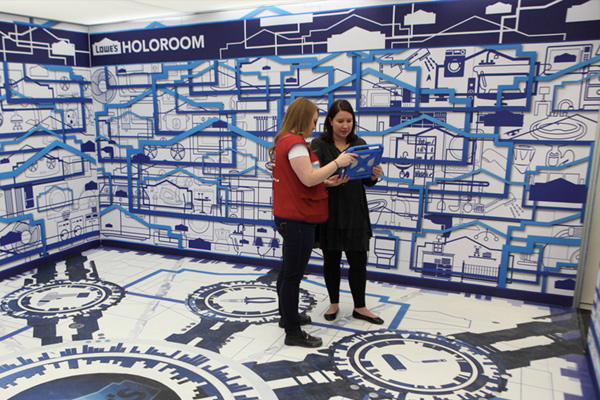
UPDATE: What are the top Virtual Reality and Augmented Reality trends for 2016?
A lot has changed since we originally published this article in January of 2015. At CES 2016, there was untold excitement about Virtual Reality and the near term potential of the technology. See what’s happening with Virtual Reality and Augmented Reality trends in 2016.
What are the top Virtual Reality & Augmented Reality Trends for 2015?
Once the stuff of sci-fi, Star Trek and gimmicky marketing, Augmented Reality and Virtual Reality matured in 2014, inching closer to a new normal. From the Facebook acquisition of Oculus Rift and Google’s investment in Magic Leap to the Samsung GearVR announcement, Google Ingress and Google Cardboard, the industry set the stage for AR and VR to become popular technologies in 2015.
In mid-2014, Facebook’s $2B acquisition of Oculus Rift brought Virtual Reality and Augmented Reality into the mainstream field of view. Mark Zuckerburg was clear on the rationale behind it: The future of popular computing is the distraction-free, heads-up communication enabled by AR and VR.
There continues to be a pressing need for businesses and consumers to be able to see and experience things that can’t be physically present and to project layers of virtual data onto real world environments, creating deeper and more meaningful experiences. AR and VR technologies are finally ready to help solve these problems. Ready for the details? Here’s where things are headed with Virtual Reality and Augmented Reality trends for 2015.
1. Affordable VR headsets will normalize Virtual Reality – “It’s not just for gamers anymore”
The awkwardness of Google Glass will dissolve into better presentation and broader acceptance of wearable AR and VR hardware. In 2015, it will no longer take a savvy early adopter or a $2500 investment to experience wearable experiential technology. Accessible headsup displays such as Samsung GearVR and Google Cardboard have transformed VR hardware into an affordable, usable smartphone peripheral that can be used by just about anyone and goes beyond gaming. GearVR has been described as a consumer media device ripe for new content, rather than a gaming device. More advanced displays such as Meta, Magic Leap, Glyph and the magical Microsoft HoloLens system will start to gain notable traction as they work to launch consumer products.
2. Evolved AR & VR business and marketing solutions
Early explorations of Augmented and Virtual Reality for sales and marketing tended to reference awkward QR code use cases, such as launching a video from a poster or product. They were gimmicky and simplistic at best, awkward and disappointing at worst. In 2015, expect to be captivated and enthralled with the Augmented Reality and Virtual Reality business and marketing applications that emerge. 2014 gave us the AZEK 3D visualizer, the Land Rover virtual showroom and industrial applications including the Daqri SmartHelmet. In 2015, expect to see businesses and marketers get even more creative and use AR and VR to solve real business problems such as big data collection and analysis, inventory reduction and experiential communication.
3. Retailers get serious with AR and VR as consumers start to expect it
Immersion via AR and VR is the opposite of the current state of consumer distraction. Retailers and other businesses will look to benefit from the immersive experiences that these technologies enable. Lowe’s Home Improvement created the Lowe’s Holoroom to use these technologies to refocus on the customer experience and in-store interactions. It’s true that Ikea, Moosejaw and Ballard Designs all toyed with Augmented Reality concepts in 2012 and 2013. And 2014 saw in-store applications from convenience store retailer Hess Express along with storied catalog company, Hammacher Schlemmer. Combining AR and VR with beacon technology and affordable Virtual Reality headgear, retailers will continue to get creative in 2015.
3D scanning and printing devices will continue to evolve and we expect to see retailers combining these technologies with AR and VR for rapid iteration and in-store experiences starting this year.
4. Virtual test drives – and virtual vacations
We started to see this in 2014 with the Marriott virtual honeymoon campaign and Volvo’s Google Cardboard test drive. Expect to see more virtualized experiences in the year ahead. We are looking forward to virtual weddings, family reunions and company meetings.
5. Phones built for AR & VR
The dominant way most consumers will experience Virtual Reality will be on mobile devices, according to the MIT Technology Review. Max Cohen, head of mobile at Oculus VR says (and we agree), “You can’t surpass the beauty of being untethered.”
What’s most exciting is that 2015 will finally prove out the usefulness of Virtual Reality and Augmented Reality technologies beyond gaming. We can think of several: emergency preparedness, training and education, and creating new emotional connections through shared virtual experiences. The technology has finally evolved to be light, portable and utterly convincing. Now that the tech has arrived, it’s just waiting for applications.
How AR will change sales and marketing in 2015?
If you’re interested in digging into the business cases behind enterprise Augmented Reality and Virtual Reality projects retailers and manufacturers, thumb through this deck from our recent webinar “Magic Leap to VisualCommerce®: How AR will change sales and marketing in 2015.”












